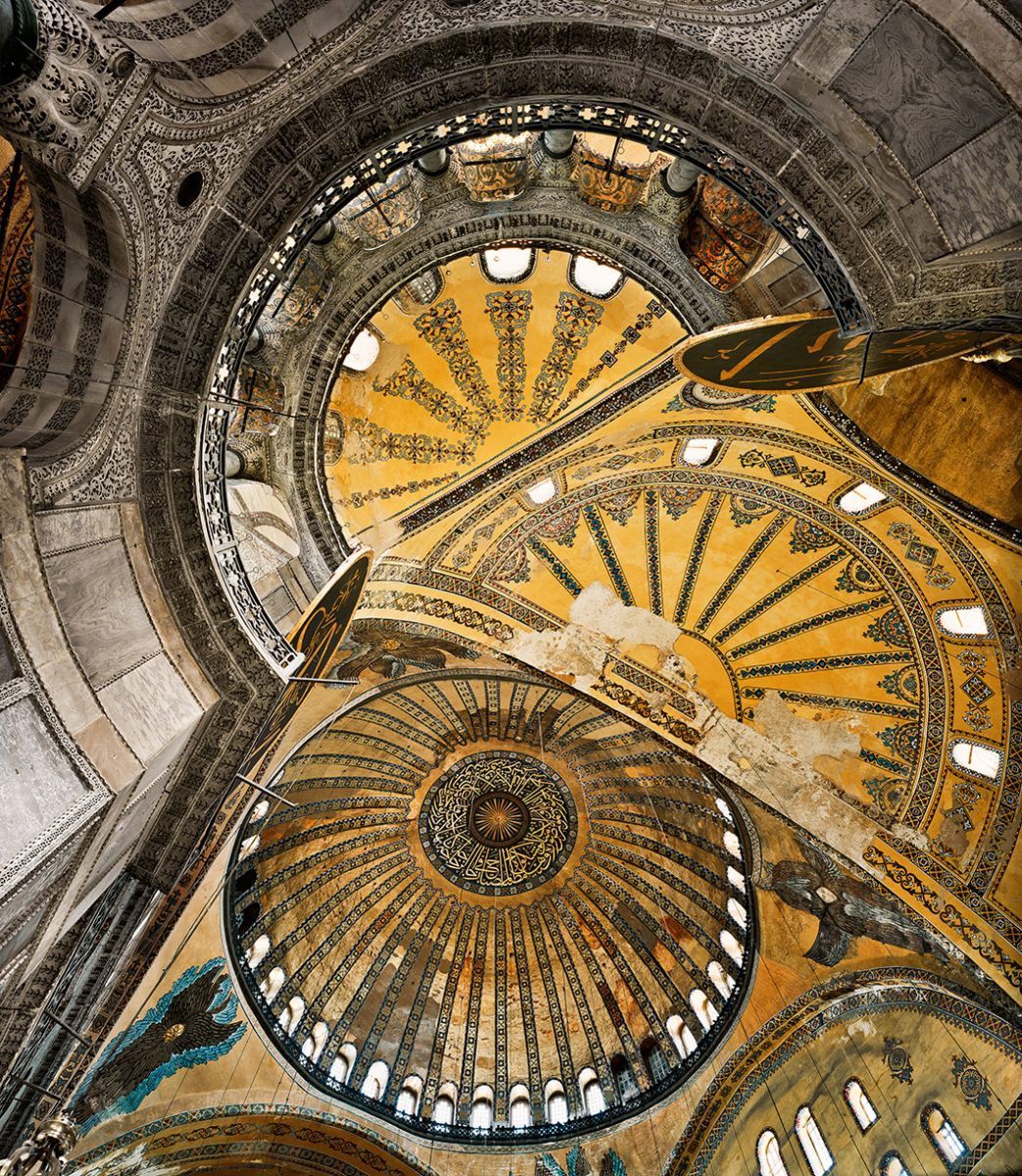- Open Today: 10.00–18.00
- Ticket
- Shop
- Membership
- TR EN

Ahmet Ertuğ, 1949
Hagia Sophia Dome, 2011
In 1974 Ahmet Ertuğ graduated from the Architectural Association School of Architecture in London. He then started working in the UK, Iran, and Turkey. He had taken up photography in 1972 and continued research and photography projects on ancient Persian settlements in Iran and traditional Japanese architecture. After Japan, Ertuğ returned to Istanbul to work on conservation plans for the historical city. His knowledge of Istanbul’s historical areas led him to work on its Byzantine, Ottoman, and Roman heritage. His photographs of architecture, sculpture, and landscapes, taken with a 20 x 25 cm large format camera, display colors and details in all their verisimilitude.
Ertuğ’s Dome series, in which he focuses on this most iconic architecture element, took shape as he photographed the Hagia Sophia and documented the most famous opera houses and libraries in the world. Besides its symbolic meanings, such as embodying a divine sanctuary or representing heaven and the skies, the dome also pushes the limits of architecture with its stately structure. Now a symbol of Byzantine architecture, the Hagia Sophia’s magnificent dome marks a turning point in architectural history.
Photography
C-print
Oya – Bülent Eczacıbaşı Collection
Istanbul Museum of Modern Art / Long Term Loan